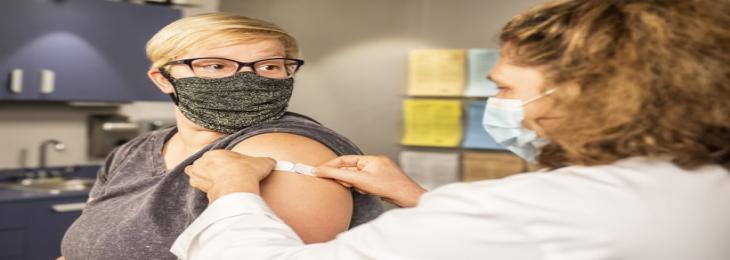
North Carolina University and Stanford University scientists have created a 3D-printed vaccine patch that offers more safety than a vaccine shot.
According to the results, the patch of vaccine caused a 50-fold high T-cell and antigen-specific antibodies response than a syringe injected under the skin. Because of the improved immune reaction, a microneedle vaccine patch can use a minor dose to prompt a similar immunologic response as just a vaccine administered using a syringe. Though microneedle patches had been researched for years, Carolina and Stanford's study removes several previous obstacles: the microneedles may be easily adjusted to make multiple vaccine patches for measles, flu, or COVID-19 vaccine using 3D printing.
The covid 19 pandemic has served as a bad reminder of the impact that appropriate immunization may make. However, receiving a vaccination usually needs an appointment at a hospital or vaccination center. A healthcare staff takes a vaccine, loads an injection with the liquid vaccine composition, and gives a shot into the patient's arm. Although this procedure appears straightforward, some obstacles might hamper mass vaccinations, ranging from vaccine cold storage to the requirement for skilled personnel to administer the injections. Meanwhile, vaccination patches containing a coat of vaccine microneedles disintegrate in the skin and can be sent to any place in the globe with no special processing, and individuals can put on the patch.
The majority of microneedle vaccinations are made using master templates to create molds. Microneedle molding, instead, is unadaptable and has disadvantages such as diminished sharpness of the needle while replicating. The method enables for direct 3D printing of microneedles, allowing for a wide range of design options for the finest microneedles by cost and performance.
At the University of North Carolina with help of DeSimone's CLIP prototype 3d printing machine, the microneedle patches were printed in 3D. The chemical engineers and microbiologists team continues to improve by framing RNA vaccines, like the covid 19 vaccine of Moderna and Pfizer, into the microneedle patches to test and validate.
The vaccine patch's ease of use and competence open the way for a novel means of administering vaccinations that are also painless, minimally invasive than a needle injection, and might be self-administered.






